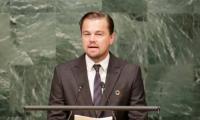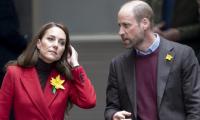KARACHI: The State Bank of Pakistan (SBP) on Friday ramped up its benchmark interest rate by a more-than-expected 150 basis points to 10 percent, after the rupee hit new lows but analysts said the increase is likely to put a further dent in economic growth, which has already trimmed to little over 4 percent for the fiscal 2019.
“Further consolidation is required to ensure macroeconomic stability and therefore has decided to raise the SBP policy (target) rate by 150 bps (basis points) to 10 percent effective from 3rd December 2018,” the State Bank of Pakistan (SBP) said in a statement.
The central bank has pushed up the policy rates by cumulative 425 basis points since January. The current rate is four-year high.
Analysts were expecting 50 to 100 basis points increase in the interest rate. They were surprised over the latest unexpected hike that they said might be a progeny of a considerable 3.8 percent rupee devaluation on Friday.
“In a poll of 13 brokers, 12 analysts expected 100 basis points increase while one analyst expected 50 basis points increase,” brokerage Topline Securities said in a flash note.
The SBP said projected average headline consumer price inflation for FY2019 in the forecast range of 6.5–7.5 percent, above the annual target of six percent, though “the recent decline in international oil prices could potentially play a positive role in slowing down the current inflation trajectory”.
“The near term challenges to Pakistan’s economy continue to persist with rising inflation, an elevated fiscal deficit and low foreign exchange reserves,” the central bank said.
Ashfaque Khan, who is a member of government’s Economic Advisory Council, said one percent increase in discount rate will add half a percent of GDP increase in budget deficit.
“Resultantly, a 0.7 budget deficit goes up,” Khan added.
The SBP realised that there might be a notable moderation in economic activity during the current fiscal year given the quarterly decline in large scale manufacturing, “reflecting a short term cost of pursuing macroeconomic stability”.
SBP projected real GDP growth for FY19 at slightly above four percent, which was a further diversion from its previous 4.7 percent projection in the annual state of economy report last month, and is much below the annual target of 6.2 percent.
The International Monetary Fund and World Bank forecasts suggest the Pakistani economy is likely to grow by four to 4.5 percent for the year fiscal year ending June 2019 compared to 5.8 percent growth in the last fiscal year.
The SBP said the lagged impact of the 275 basis point increase in the policy rate since January and other policy measures are likely to contain domestic demand during the current fiscal year. Initial estimates for major crops, except wheat, are expected to fall short of levels achieved in the last year.
“The slowdown in commodity producing sectors is expected to limit the expansion in the services sector as well,” it added.
The SBP further said contraction in non-oil imports and constant increase in exports and workers’ remittances narrowed external current account deficit by 4.6 percent to $4.8 billion in the July-October period.
“Although narrowing, the current account deficit is still high,” it said.
The SBP expected its strained foreign exchange reserves to get succor from higher foreign inflows from both private and official sources during the second half and after the availability of recent bilateral arrangements including the deferred oil payments facility from January 2019 onwards.
“The projected decrease in the current account deficit that could be further supported by the recent decline in international oil prices will instill confidence in the foreign exchange market,” it said.
“These developments would help reduce pressures on SBP’s net liquid foreign exchange reserves.”
KARACHI: Bank Alfalah on Thursday announced that its cardholders can add their credit and debit cards or digital...
Two persons inspecting leather at Hong Kong’s leather trade fair. —aplf website/FileKARACHI: The Trade Development...
A security personnel standing outside a Soneri Bank branch in this image released on July 13, 2022. —...
A woman picks a gold earring at a jewellery shop in the old quarters of Delhi, India, May 24, 2023. —...
A representational image showing a person using a mobile phone as shades of coding appear of the left side. —...
US President Donald Trump holds an executive order about tariffs increase, flanked by US Commerce Secretary Howard...







